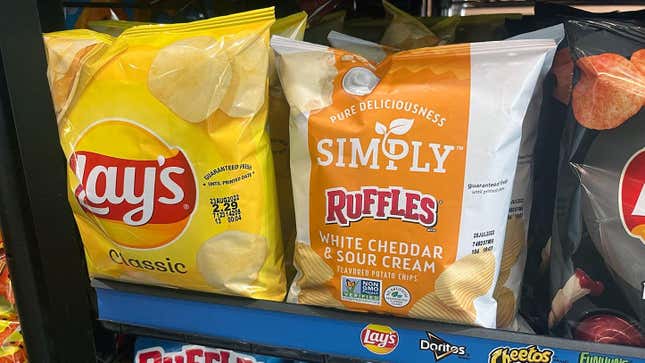
A few weeks ago, I was sitting near Lake Michigan with a friend when we decided it was time to split up to go eat. With an eerie calm—imagine a reclining Ted Bundy about to go on lunch—my friend announced he was going to have soup.
It was 80-some degrees out, maybe even 90. That is only “soup weather” if we’re talking about the humidity. And to be clear, this man (who will obviously murder me one day) was not referring to gazpacho or some other cold soup (a smoothie?), but to chicken noodle soup. You know, the stuff you eat when you have a runny nose in November.
If we go by my informal survey of my other, non-serial-killer friends, I am right: Soup is not for hot days. But I also looked up Campbell’s Soup sales to be sure. According to a spokesperson quoted by Fox Weather, soup sales are, in fact, higher in areas experiencing winter weather.
Even more interesting is that Campbell’s actually keeps track of weather forecasts on a regional level when building its marketing strategies. “Targeted, weather-related regional advertising ramps up when forecasts call for low temperatures or winter precipitation,” the spokesperson said.
So we might prefer soup in the winter, but how much of that is thanks to the extra advertorial nudge? What are some other (sort of genius) ways that food marketers have tricked us into buying their products?
How food marketing appeals to our senses
Luca Cian, associate professor of marketing at the University of Virginia, explained to me via email that consumers are somewhat forced to rely on design cues and packaging-based claims if they don’t have a reliable understanding of what their food experience might be. Do we want something healthy? Pleasant? Soothing?
Cian pointed me toward research that found “rounded” design elements—shapes, names, typefaces, and low-pitched sounds—best convey “sweet” tastes (we see you, Dunkin’). Angular shapes—or names, typefaces, and high-pitched sounds—suggest “sour” tastes.
Other studies showed that even prompting consumers to imagine the smell of a food can cause them to crave the item. (Does walking by the Jimmy Johns “Free Smells” sign get the juices flowing for you?)
Psychology is at play in all marketing, but food can truly play on all the senses. Here are the tactics used by some prominent brands to persuade us to purchase their products.
Starbucks
“In Starbucks, the smell of fresh coffee is known to be strong—that’s because every store is required to grind their coffee beans,” Cian says. “This allows for the coffee aroma to float around the store and hit customers the moment they walk through the door.”
He points out that even though it would be more cost-effective (and a whole lot quieter) to grind and package the beans in advance, then send them to stores, the scent is too much of a draw to remove that step.
Betty Crocker
General Mills launched a line of cake mixes under its Betty Crocker brand in the 1950s. All you needed to do was add water, bake, and enjoy. When sales failed to meet expectations, the company brought in a team of psychologists, who found that average American housewives felt guilty using the product because it was too easy.
Even though the cake mix included powdered egg, the brand changed the recipe to include the additional step of whisking in a real egg. That one extra step—plus the new marketing slogan, “Add an Egg”—made sales soar. Ladies, we simply love the illusion of more work!
Frito-Lay
In an effort to get women to buy more Frito-Lay products, agency Juniper Park used neuromarketing to help redesign the snacks’ packaging. The research found that women “could process ads with more complexity and more pieces of information” than men (yay?). Additionally, women tend to have a larger anterior cingulate cortex, a part of the brain that processes decision-making and is linked to feelings of guilt. Hey, is this why we felt the need to Add an Egg?
The resulting package redesign focused on ways to tone down a woman’s seemingly innate sense of guilt: the graphics were quieter and showed off healthy ingredients—i.e., an illustration of a potato rather than the chip it’s destined to become.
Panera Bread and Cinnabon
Like Starbucks, Panera Bread and Cinnabon bank on scent. Panera reassigned the baking staff at most of its locations from night to day shifts so the stores smell like a bakery when customers are actually around, rather than before its doors even open.
Cinnabon executives, meanwhile, actually tell franchisees to buy “the weakest hood possible” within local laws for their ovens so the scent of fresh-baked rolls can better infiltrate your local mall or airport. Weak hoods, weakened resolve, can’t lose.